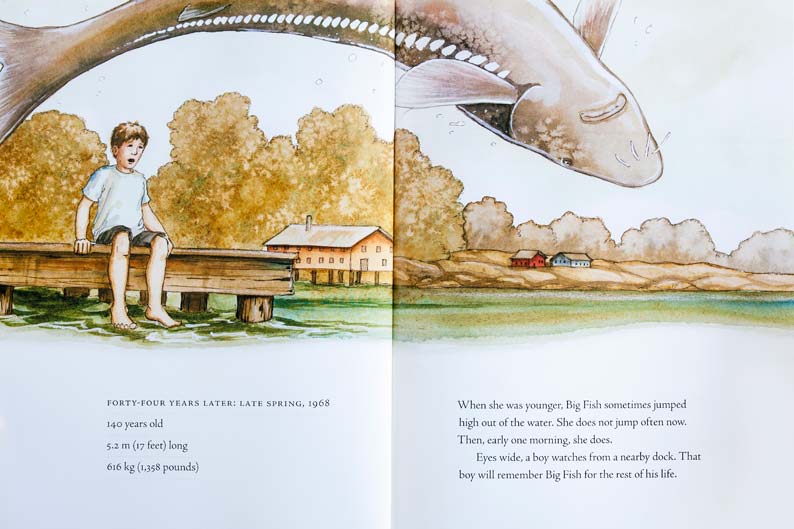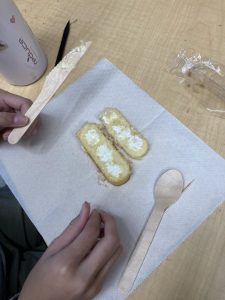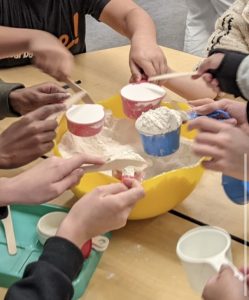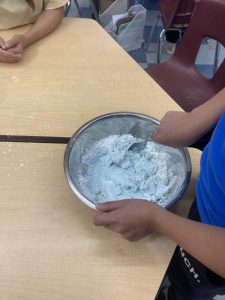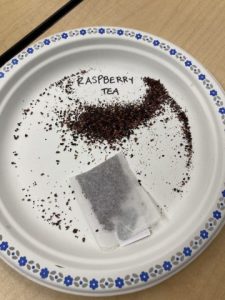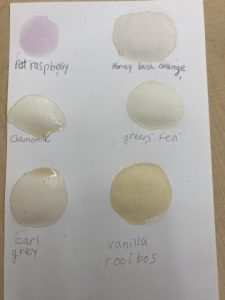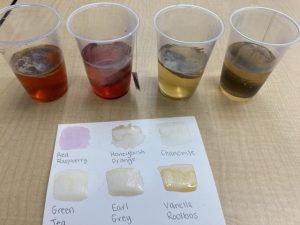Our class created our own version of the famous ‘elephant toothpaste’ experiment! To do this experiment at home (with adult permission and supervision), you can…
-fill an empty plastic bottle or cup around 1/2 way with 3% hydrogen peroxide (if using a higher %, please wear gloves and eye protection)
-add a large squirt of dish soap
-optionally, add food colouring and/or peppermint extract
-then, in a separate cup mix a large spoonful of instant yeast with some warm water for 30 seconds (until dissolved)
-quickly and carefully pour the yeast mixture into the hydrogen peroxide mixture and step back
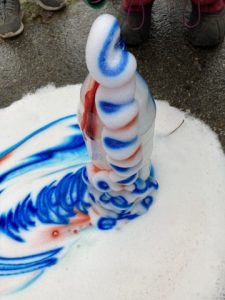
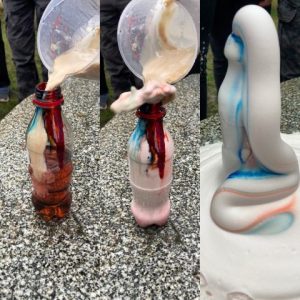
We learned this experiment creates and exothermic reaction, which means it gets hot! We noticed that when we increase the amount of soap and yeast, the bubbles continued to form for a much longer amount of time.
Pleases note: Always be careful when doing Science at home, and make sure to have adult supervision and permission.

